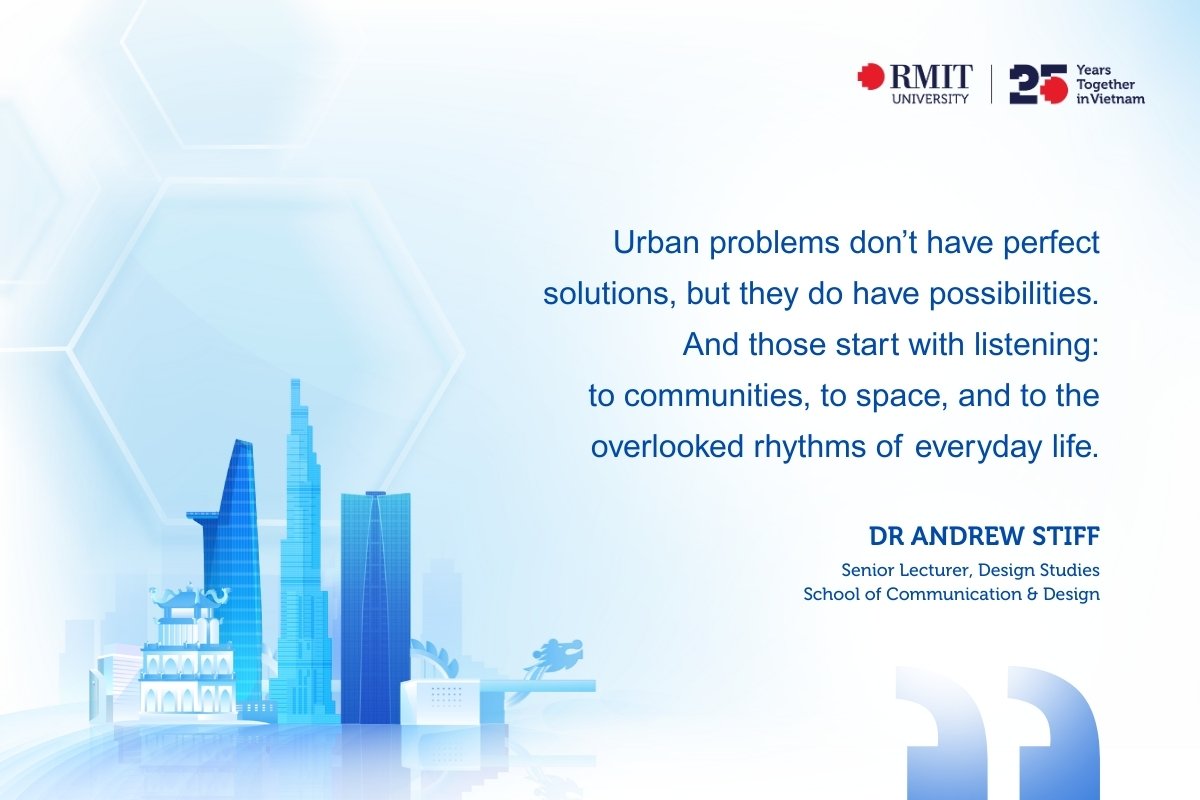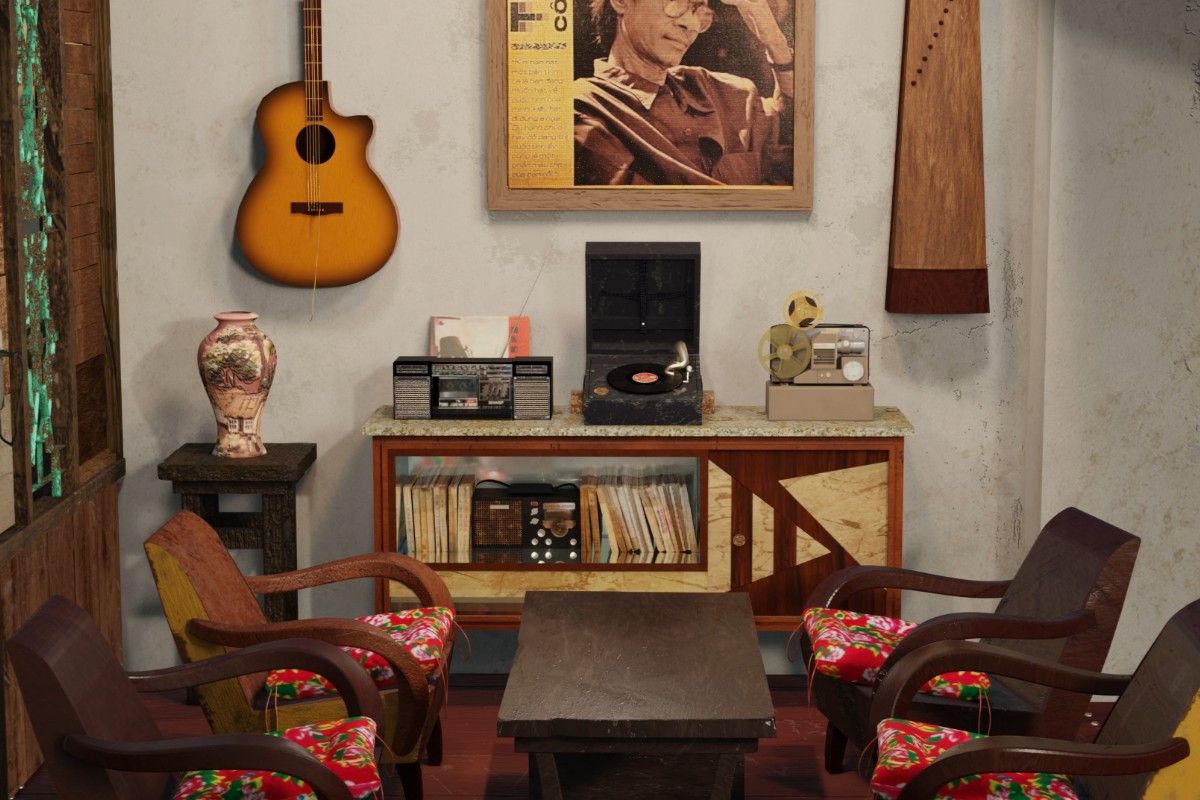The River Cities Network (RCN) is a multi-sited global initiative to pursue research on the interrelationship between cities and their rivers and waterways. In Vietnam, the research centres on the Te Canal, using creative practice, from film and sound to VR and archival storytelling, to document and reimagine this often-overlooked space. The goal is to make visible the everyday urban heritage that city planning often neglects.
A richer reading of the city
Most heritage efforts in Vietnam focus on temples, pagodas, or colonial villas. “Traditional heritage, heritage of the past, is well acknowledged,” Dr Stiff explained. “But Ho Chi Minh City has struggled to define its identity beyond being an economic engine.” His work drew attention to a different type of heritage: the everyday, sensory-rich spaces where urban life actually happens.
The Te Canal (known as Kenh Te locally), which divides Districts 4 and 7, once supported a floating market and still hums with informal trade. “This area offers insight into what we might call the heritage of the future,” Dr Stiff said. “It’s not about monuments, but about lived experience, cultural rhythms, and relationships with the environment.”
These are the textures that give the city character – the smell of street food, the sound of karaoke at dusk, the way infrastructure yields to water during full moons. “We all love to hate karaoke,” Dr Stiff joked, “But how quiet did the city feel during the lockdown without bike horns and karaoke? These aren’t nuisances, they’re the soul of the city.”






